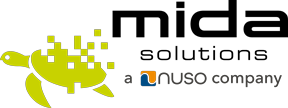Average Handle Time – AHT
What is Average Handle Time?
The Average Handle Time (AHT) is one of the most important KPIs of the contact center and it basically measures the average duration of the customer call transaction.
This measure can be an indicator of the agents’ performance but not necessarily the shorter the AHT is, the better the quality of the service: if an agent is more concerned on closing tickets rather than solving issues, its performance will be poor, even with a lower AHT.
How to calculate AHT?
The Average Handle Time is calculated from the time the customer initiates the call to ending the call, including hold time, transfers, and after-call work time. This total should then be divided by the total number of calls to get the AHT.
AHT = (Talk time + total hold time + total after-call tasks) : number of total calls
The importance of AHT in a contact center
Making sure that your staff’s main objective remains to solve callers’ issues, reduce the AHT could be your next customer service’s goal, as it comprehends:
- reducing the hold time before customer are served and during the conversation
- your operators solve customer issues in the less possible time (increasing also First Contact Resolution Rate)
- optimizing talk time because agents are well-trained and well-organized
- assigning the call to the most appropriate agent through dedicated queues
- as a resul, agents can handle a larger number of calls
How to reduce AHT in a contact center?
There are many techniques to lower AHT because it is a result of many concurrent factors, which we have mentioned above. Here some example of how you can reduce it and improve AHT:
- coach and train agents to be more efficient during calls can help them save time solving customer issues. For this purpose, you can invest on self-service resources like a knowledge base and help articles
- integrate your contact center with a CRM tool that will allow agents to have customer information at hand during the call.
- record calls and analyzes them for ongoing training. You can find out the most frequently asked questions, agents’ lapses and best practices.
- optimize call flow, call routing, and call handling by relying on a professional queue management system and attendant console
